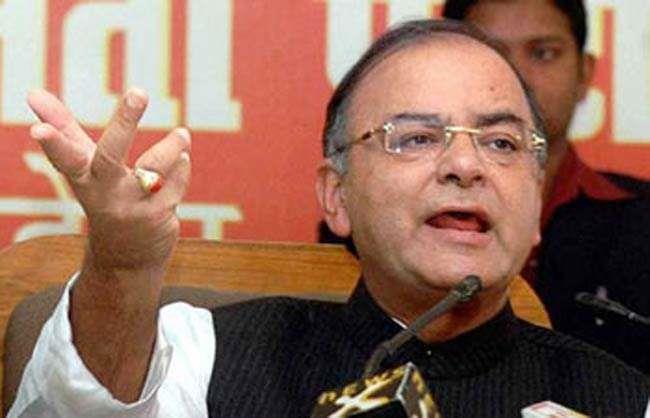JANUARY 8, 2020

President Trump’s address to the nation after Iran’s missile attacks on bases in Iraq where U.S. troops are stationed contained a number of factually dubious statements. Here’s a quick round-up.
“Iran’s hostilities substantially increased after the foolish Iran nuclear deal was signed in 2013 and they were given $150 billion, not to mention $1.8 billion in cash.”
The deal was signed in 2015, but that’s not the least of Trump’s factual problems in this sentence. It includes two misleading statements, including one Bottomless Pinocchio claim.
Trump often makes it sound like the United States cut a check to Iran as part of the Iran nuclear deal, formally known as the Joint Comprehensive Plan of Action (JCPOA). He also always uses too high an estimate, $150 billion, for the assets involved.
But this was always Iran’s money. Iran had billions of dollars frozen in foreign banks around the globe because of international sanctions over its nuclear program. The Treasury Department estimated that once Iran fulfilled other obligations, it would have about $55 billion left. The Central Bank of Iran said the number was actually $32 billion.
As for the $1.8 billion (actually, $1.7 billion), this was related to the settlement of a decades-old claim between the two countries, not the Iran nuclear agreement. An initial payment of $400 million was handed over on Jan. 17, 2016, the day after Iran released four American detainees, including Washington Post correspondent Jason Rezaian. The timing — which U.S. officials insisted was a coincidence — suggested the cash could be viewed as a ransom payment.
But the initial cash payment was also Iran’s money. In the 1970s, the then pro-Western Iranian government under the shah paid $400 million for U.S. military equipment. The equipment was never delivered because the two countries broke off relations after the seizure of American hostages at the U.S. Embassy in Iran. Two other payments totaling $1.3 billion — a negotiated agreement on the interest owed on the $400 million — came some weeks later.
“Instead of saying, ‘Thank you,’ to the United States, they chanted, ‘Death to America.’ In fact, they chanted ‘Death to America’ the day the agreement was signed.”
This is a straw man. A relatively small percentage of Iranians participate in these chants, which is mainly of symbolic use for the government. “Over the decades, I’ve heard ‘Death to America!’ shouted routinely at Friday prayers, and at commemorations of the U.S. Embassy takeover and other demonstrations,” our former colleague Robin Wright wrote in the New Yorker in 2015. “The regime refuses to shelve the slogan. These days, however, students are often bused in on anniversaries as crowd-filler; the perk is a day off from school. They chant when prompted. The enthusiasm is a bit like the anti-American graffiti on public walls—it hasn’t been painted over, but it’s fading.”
“Then Iran went on a terror spree funded by the money from the deal and created hell in Yemen, Syria, Lebanon, Afghanistan and Iraq.The missiles fired last night at us and our allies were paid for with the funds made available by the last administration.”
All money is fungible, but Trump is stretching the factual evidence to blame the missiles on the deal negotiated by the Obama administration. Experts say such a claim is far-fetched and that actual intelligence tying Iran deal monies directly to the missiles is highly unlikely. The White House did not respond to a request for evidence.
“There’s no way to corroborate that,” said Karim Sadjadpour, an Iran policy analyst at the Carnegie Endowment for International Peace. “It’s such an obviously unprovable claim I’m surprised it wasn’t excised.”
When the nuclear deal was negotiated, many experts warned that lifting sanctions on Iran would free up more money for militant groups funded by Iran. Obama administration officials said they expected Iran’s activities in the region would increase and they were prepared to take action through sanctions and other methods. “As we expected, Iran has not moderated this conduct since the implementation of the JCPOA,” a senior Treasury official said in 2016. “And, as we promised, we have continued to target this behavior, with interdictions, with diplomatic pressure, and with sanctions.”
Moreover, one specific criticism of the deal was that it did not cover Iran’s ballistic missile program. Iran insisted the deal was limited to the nuclear program, not its missile program. Limits on Iran’s ballistic missiles thus have been handled under U.N. Security Council resolutions, including the one that implemented the deal. The Washington Post recently reported that Iran has made unexpected gains in the accuracy of its missiles, as a result of changes ordered more than a decade ago by the country’s supreme leader, Ayatollah Ali Khamenei. But whether those improvements can also be tied to the Iran deal is unclear.
“The very defective JCPOA expires shortly anyway and gives Iran a clear and quick path to nuclear breakout.”
This is false. The JCPOA’s prohibition on Iran building nuclear weapons does not expire. Other international agreements to which Iran has committed itself also prohibit the development of such weapons.
Critics of the JCPOA have voiced concerns that, despite these commitments, Iran could keep working toward nuclear weapons capability under the guise of pursuing peaceful goals, such as a nuclear energy program. The JCPOA gradually lifts restrictions on the types of nuclear activities and the level of uranium enrichment Iran may conduct. These and other provisions sunset over 10, 15, 20 or 25 years. Trump administration officials argue that easing these restrictions over time would open the door to nuclear weapons development in Iran, rendering the JCPOA ultimately ineffective.
Supporters of the nuclear accord say the JCPOA at least buys time, subjecting Iran to strong constraints on its nuclear activities for 10 to 25 years. Without the deal in place, Iran could hasten its development of nuclear weapons on an even shorter timeline than the one Trump found unsatisfactory, they say.
After Trump withdrew the United States from the JCPOA in 2018, the other signatory nations chose to remain in the deal, though experts say the accord may now be on its last legs.
Iran began to flout some of the JCPOA’s restrictions after Trump withdrew from the pact, while continuing to comply with other terms.
“In July 2019, Iran exceeded the agreed-upon limits to its stockpile of low-enriched uranium, and then began enriching uranium to the higher concentration used in medical isotopes, still far short of the 90 percent purity required for weapons. … In September, Iran further weakened its commitments by starting to develop new centrifuges to speed up uranium enrichment, and in November, it resumed heavy water production at its Arak facility,” according to the Council on Foreign Relations.
After a U.S. drone strike last week killed Iran’s top military commander, Maj. Gen. Qasem Soleimani, Iran said it would no longer abide by uranium enrichment limits in the JCPOA.
“Iran’s announcement alone does not render the agreement moot, and at least one important element of it — U.N. inspection power — remains in force,” The Washington Post’ reported. “But Iran has less incentive now to abide by the agreement, and Trump appears to have less leverage to hash out the better deal with Tehran that he says President Barack Obama failed to get.”
Trump never acknowledges that Iran is a signatory to the Nuclear Non-Proliferation Treaty and has committed itself to ratifying the International Atomic Energy Agency’s Additional Protocol in 2023. The former restricts Iran from ever developing nuclear weapons, and the latter grants international inspectors wide access to monitor nuclear-related activities within Iran’s borders. In agreeing to the JCPOA in 2015, Iran reaffirmed its commitment to the Non-Proliferation Treaty and stated: “Iran reaffirms that under no circumstances will Iran ever seek, develop or acquire any nuclear weapons.”
“Over the last three years, under my leadership, our economy is stronger than ever before and America has achieved energy independence. … We are now the number one producer of oil and natural gas anywhere in the world. We are independent, and we do not need Middle East oil.”
Trump frequently lays claim to the strongest economy in U.S. history, but it’s another Bottomless Pinocchio claim (which he’s repeated 242 times as of Dec. 10, by our count). In reality, the unemployment rate has gone lower and GDP growth has been higher in previous administrations.
The president also frequently takes credit for a boom in the U.S. energy sector that began during the Obama administration.
The United States has led the world in natural gas production since 2009. Crude oil production has been increasing rapidly since 2010, reaching record levels in August 2018, according to U.S. Energy Information Administration data. In September 2018, the United States passed both Russia and Saudi Arabia to become the largest global crude oil producer. It is expected to hold that position, according to predictions from the International Energy Agency.
His claim that the United States is now energy-independent and does “not need Middle East oil” is misleading. “In 2018, the United States imported about 9.94 million barrels per day (MMb/d) of petroleum from nearly 90 countries,” according to an EIA report, with 43 percent coming from Canada and 16 percent from Persian Gulf countries.
“The American military has been completely rebuilt under my administration, at a cost of $2.5 trillion.”
Trump appears to be including three fiscal years of military funding, including the current one, which began in October.
But the money is not all spent, only a portion of it is destined for new equipment, and the equipment is not all built. It takes years to assemble fighter jets, ships and submarines.
The Washington Post reported previously that the president’s comments “grossly overstate spending decisions and mask an aging fleet of planes.”
“The actual amount spent on military equipment since he became president is much less, closer to $420 billion, according to Todd Harrison, a defense budget expert and senior fellow at the Center for Strategic and International Studies,” The Post said. “The rest was spent on things like personnel, operations and maintenance, and research and development.”
“Three months ago, after destroying 100 percent of ISIS and its territorial caliphate, we killed the savage leader of ISIS, al-Baghdadi.”
Trump has a long history of exaggerating U.S. progress against ISIS, a proto-state terrorist network that can be traced back to a group called al-Qaeda in Iraq, which was started by a Jordanian terrorist named Abu Musab al-Zarqawi, and arose in response to the U.S. invasion of Iraq in 2003.
ISIS has certainly lost physical land holdings but it remains a serious threat with some 18,000 fighters in Iraq and Syria. (While Trump takes credit for a 100-percent reduction in ISIS’s territory, about half of that gain took place under Obama, according to a 2017 briefing by a Trump administration official.)
“Despite losing its territorial ‘caliphate,’ the Islamic State in Iraq and Syria (ISIS) solidified its insurgent capabilities in Iraq and was resurging in Syria this quarter,” the Defense Department Inspector General said in a report in August that said Trump’s withdrawal of forces from the Syrian-Turkish border had complicated the situation. “The reduction of U.S. forces has decreased the support available for Syrian partner forces at a time when their forces need more training and equipping to respond to the ISIS resurgence.”
Courtesy/Source: Washington Post















































































































